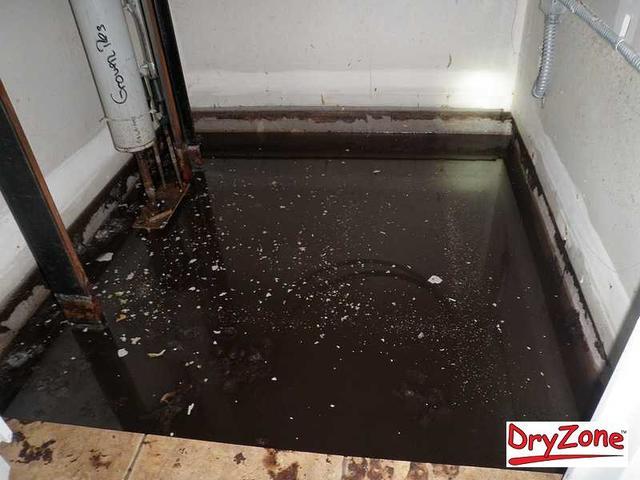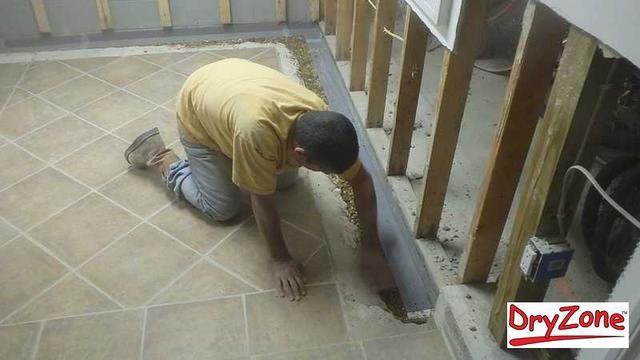
Flooding in a basement
It almost looks like a small swimming pool, but this is actually in the house.

Measuring the water in the basement
There was so much water that the inspector thought to measure it. It gives him an idea of just how bad the damage is.

Moldy basement walls
If you look in the closet, you will see the large black spot. This is what happens when moisture and standing water are allowed to stay in a basement.

Prepping the floor for WaterGuard
Thanks to our national network, DryZone has access to all kinds of real world product testing. A few years ago we were using heavier and slower jackhammers. Since then we have used a lighter and more efficient jackhammer and it makes for faster and better work. The homeowners are happier and the crewmen are certainly less fatigued.

Getting down and dirty
After he preps the floor for the WaterGuard, Jose cleans up the chunks of concrete.

Filling in around the WaterGuard
Once the WaterGuard drainage pipes are in place, the crew fills in around them with small round stones. This provides a sort of filter for any dirt that might travel in with the ground water. It is just one more step that helps to keep the pipes free of clogs.

Even layers and flat pipes
The WaterGuard is designed to sit flat on top of the footing. This means that there are no "hills and valleys" for water to flow across. The water flows easier and can reach the sump pump faster.
